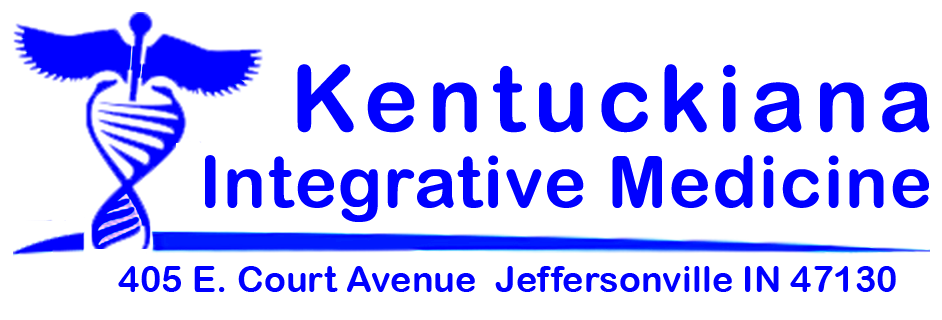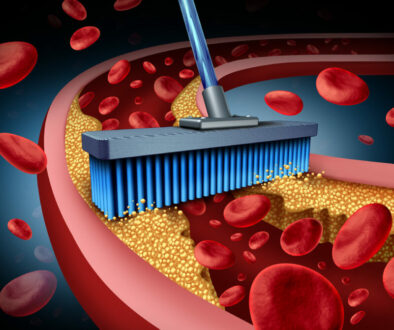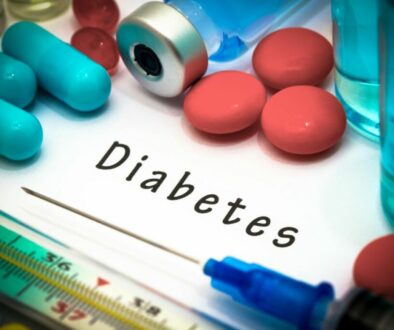Heart Disease Reversed
Kentuckiana MD, Dr Rafael F. Cruz, Brings New Hope to HEART ATTACK, CHF, Peripheral Artery Disease, and TIA [mini-stroke] patients with IV Chelation,
IV Ozone, IV Vitamin C, Nutritional Supplement Changes, DIET, and Cardiac Rehabilitation.
Disclaimer:
Results variable. Management strategies are NOT FDA-approved. Results NOT guaranteed. Symptom improvement is NOT guaranteed, and guarantees are not made or implied. Non-FDA-approved therapies are not designed to treat, cure, or diagnose any particular illness, but rather to support self-healing mechanisms and body detoxification of heavy metals.
Mary avoided potential surgery by having her cardiovascular issues treated with alternative methods.
IN THIS NEWSLETTER YOU WILL FIND:
- HEART and BLOOD Vessel Disease Can Be Reversed or Slowed as research from a variety of prestigious Cardiologists nationwide demonstrates.
- A Dramatically Improved Cardiac Catheterization Report reveals the results of IV Chelation: Arteries previously 95% blocked are now wide open!
- Video Testimonials from Three Patients Reveal How IV Chelation Helped Their Hearts and Changed Their Life
- TAKE CONTROL OF YOUR HEALTH: At the end of this Newsletter Find a Prescription for You to Test Your Own Cardiac Wellness!
Carotid Artery Blockage-Disease Reversed with IV Chelation and IV Plaquex. Therapy results in better blood flow, energy and memory.
Dr Rafael F. Cruz MD of Kentuckiana Integrative Medicine offers IV Chelation treatment and with it brings new hope to heart attack, congestive heart failure, peripheral artery disease, and TIA [mini-stroke] patients in Kentuckiana using IV Chelation, IV Plaquex, IV Ozone, IV Vitamin C, diet and nutritional supplement changes, and cardiac rehabilitation.
The human body was designed to be a self-cleaning organism. However, modern living exposes us to chemical and toxic metals coming from air pollution, pesticide-laden fruits and vegetables, fish, food additives, chemicals in the water, antibiotics in meat, medications, dental fillings, deodorant, toothpaste, plastic, rubber, fertilizer, chemicals in cosmetics and household cleaning products to name just some.
Due to their abundance and pervasiveness, even if you maintain a healthy lifestyle, it is impossible to avoid all exposure to heavy metals. These toxins build up and can overwhelm your body’s ability to fully detoxify. Over time, this can cause damage to the brain, heart, blood vessels, bones, and the immune system. Research has proven the heavy metal connection to heart disease, stroke, peripheral vascular disease, and further that the removal of heavy metals improves heart, brain, blood vessel, and organ function.
Chelation Therapy is an intravenous treatment using an amino acid called EDTA in a solution containing minerals and vitamins that attaches to heavy metals and escorts them out of the body in the urine. Chelation has been used by some integrative physicians for more than forty years to treat the symptoms of a number of conditions including heavy metal toxicity, heart disease, decreased mental function, and more. Chelation has been scientifically proven to remove toxic metals from the body thereby reducing the risk of heart attack, decreasing cardiac death, and reducing the need for bypass surgery and stents. Chelation is even more effective in patients with diabetes.
The removal of plaque and poisonous heavy metals from the body improves blood flow, circulation, cellular function, metabolic function, and mitochondrial function. Mitochondria are cellular organelles inside all of our cells that act as the “energy powerhouses” making ATP or energy to keep each cell functioning.
Greg Sanders from Mississippi history of heart disease and high blood pressure was unable to walk 20 feet without shortness of breath or chest tightness. Now he able to exercise without chest pain or shortness of breath after IV chelation and IV Plaquex for his heart disease.
Heart Disease continues to be the leading cause of death in the United States according to the Centers for Disease Control and Prevention (CDC). The CDC reports that an American dies every 36 seconds from cardiovascular disease. Heart disease is the cause of 1 out of every 4 deaths and kills over 500,000 people per year. Statistics show that over a lifetime, 1 out of every 2 men, and 1 out of every 3 women will have some form of heart disease which could have been prevented through diet and exercise or slowed and/or reversed non-surgically.
Many physicians still believe that heart disease cannot be reversed. While this was a commonly held belief for years, more and more information continues to surface that demonstrates just the opposite.
- Dr. Gervasio Lamas MD: Harvard educated Cardiologist, Chairman of Medicine, and Chief of the Columbia University Division of Cardiology at Mount Sinai Medical Center;
Heart Health & Diabetes | Feat. Dr. Gervasio “Tony” Lamas
- Dr. Daniel Benjamin Mark MD: Clinical Cardiologist, Professor of Medicine, Vice Chief for Academic Affairs Cardiology Department at Duke University Medical Center, and Director of Outcomes Research at the Duke Clinical Research Institute;
- Dr. Stephen T. Sinatra MD: highly respected and sought-after Cardiologist;
- Dr. Elmer M Cranton MD: Harvard Medical School graduate, family physician, and author of “Bypass your Bypass”;
- Dr. Caldwell B. Esselstyn Jr. MD of Cleveland Clinic’s Esselstyn Heart Disease Reversal Program;
- Dr. Andre Paxio MD: Cardiologist and renowned researcher; and many others have all reported and agree that HEART AND BLOOD VESSEL DISEASE ARE REVERSIBLE.
HEART AND BLOOD VESSEL DISEASE CAN BE REVERSED OR SLOWED
Even Clogged Arteries Can Be Opened
As proven by some of the most prestigious cardiology physicians in the United States from Harvard, Cleveland Clinic and Duke

Chelation is NOT FDA approved for symptom management of heart and blood vessel disease.
Generally, American heart surgeons excel at “heart bypass surgery”; American Cardiologists are the best at angioplasty [opening clogged heart arterial vessels with balloons and by placing stents] and heart medication management. We are blessed to have these advanced technologies and physicians available to us. However, they can do little for small vessel disease of the heart and other bodily structures. This is where these non-FDA strategies shine.
NOTE: Chelation is NOT available in Kentucky and very few clinics offer it in INDIANA.
Dr. Rafael F. Cruz MD of Kentuckiana Integrative Medicine has been providing IV Chelation Therapy in Kentuckiana for almost a decade, following in the footsteps of one of his mentors, a Pioneer of Integrative Medicine in Kentuckiana, Dr. George Wolverton MD.
Medical Evaluation with Dr. Cruz and blood tests are needed before a patient can be accepted for treatment.
INSURANCE IS NOT ACCEPTED. Insurance only pays for conventional medicine and these management
strategies are not conventional and are still considered experimental.
If accepted for treatment, the approximate cost is $4,000 – $8,000 over 1-2 years.
Management protocols vary depending on the individual patient’s condition.
A stable heart patient can usually improve with 40 – 60 IV Chelation infusions, 1 per week for 30 weeks, and then maintenance infusions 2-8 weeks apart depending on management strategy recommended-selected. Patients with exertional chest pain may need to do more infusions per week. Average individual cost of IV Chelation and or a Nutritional IV is $100-$175.
The most recent research contributions to Assess Chelation Therapy by IV League Cardiologists Dr. Gervasio Lamas MD and Duke Medical Center Dr. Daniel B Marks MD are extremely encouraging. Only 40 IV Chelations appear to REDUCE ALL CAUSES OF DEATH, stroke, and or cardiac events by 18 % for non-diabetics and an impressive 41% for diabetics for the NEXT FIVE YEARS.
Expressed differently: Anyone receiving 40 chelations [30 chelation sessions once per week with the remaining 10 sessions received every 1-3 weeks and then doing NOTHING for the next 5 YEARS dramatically reduces “all-cause mortality” [ALL CAUSES OF DEATH INCLUDING STROKE, HEART ATTACK AND BLOOD CLOTS]. The chances of ALL CAUSES of DEATH are reduced by 18-41% FOR THE NEXT FIVE YEARS without additional IV chelation sessions.
Very few if any health strategies have been found with this kind of protective power. Imagine the dramatic increased health potential if a patient added lifestyle changes and chelated every other year with 40 sessions. Concrete lifestyle changes such as weight control, quitting smoking, and eliminating sugar from one’s diet all add up to better health. It is true that a person can be healthy and active even into their 90s with these applied health strategies. We know a 95-year-old who still drives to Florida from Louisville 2x year and plays golf 3x per week. Health and Well-Being are possible with discipline and determination.
Strokes and heart attacks are still possible for those receiving the above management strategies. These strategies are NOT FDA-approved, they are still experimental, controversial, and strongly debated. ONLY FDA treatments can be said to “cure” diseases. The non-FDA-approved strategies discussed here are not designed to treat, cure, or diagnose any particular illness. They simply support the body’s detoxification and self-healing pathways.
Chelation DOES NOT replace the need for the assistance of your Cardiologist or Family Doctor. Chelation is a great preventative option for those with stable heart disease. Chelation is also very helpful to those patients who have a lot of symptoms, have reached maximum medication management, and are NOT candidates for open heart surgery or additional stents which often occur in patients with small vessel heart disease. Symptoms of Heart and Blood Vessel Disease of the brain, legs, and other structures can also be reversed, improved, or slowed down using Non-FDA approved strategies as well as FDA-approved strategies such as medications, stent, and surgery. Non-FDA strategies such as IV EDTA Chelation, IV Ozone, IV Vitamin C, and FDA-approved strategies such as heart exercise rehabilitation are very helpful.
Hippocrates, the father of Western medicine famously is reported to have stated the words “Let your food be your medicine and your medicine be your food.” His prophetic words are being validated over and over again by some of the most progressive MD and DO physicians and Nurse practitioners from all over the country. If we put unhealthy food in our bodies, it is reasonable to expect damage just like putting low-octane fuel in a high-octane race car. The race car will be damaged by the inferior fuel. Garbage in, garbage out.
For diet suggestions watch the movie “Forks over Knives;” and read Metabolic Cardiology by Cardiologist Dr. Stephen T Sinatra MD FACC; or Prevent and Reverse Heart Disease by Dr. Caldwell Esselstyn Jr MD former surgeon and Esselstyn Heart Disease Reversal Program author from The Cleveland Clinic. Dr. Esselstyn’s research proves that diet can reverse heart disease. Dr. Stephen T Sinatra MD is another well-respected veteran Cardiologist with an extensive body of work on how nutrition and supplements can be used to prevent and reverse heart disease.
A DRAMATICALLY IMPROVED CARDIAC CATHERIZATION REPORT REVEALS THE RESULTS OF IV CHELATION
CLOGGED ARTERIES OPENED WITH LIFESTYLE CHANGES & IV Sodium EDTA CHELATION
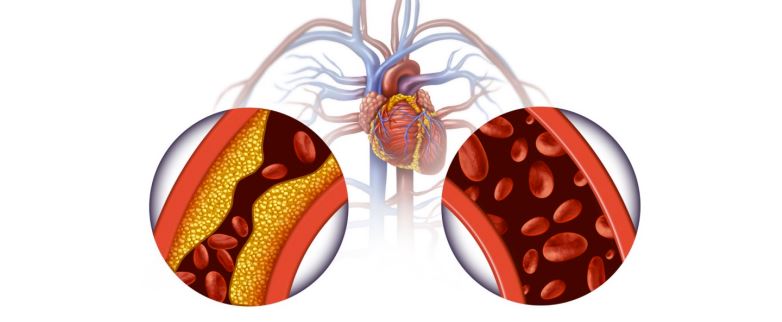
Below see Dr. Robert Harris DMD’s cardiac catherization report at 72 years old.
Dr. Harris is renowned and celebrated Kentuckiana biological dentist; naturopath; head & neck pain specialist; ozone expert; national & international speaker and teacher of biological dentistry and the use of ozone; and a dear friend. You can watch a video of Dr. Harris discussing how IV Chelation improved his heart in one of the links at the end of this Newsletter.
What is extremely interesting is that Dr. Robert Harris had a heart attack at age 45 years old with 3 main blood vessels blocked. The “widowmaker” artery was 95% blocked and was opened with a balloon angioplasty procedure, but no stent was placed since they were not available “back then.” His other arterial vessels were severely blocked – 85% and 75%. Concerned over these findings, Dr. Harris went on to receive over 300+ IV Chelations. When Dr. Harris was re-evaluated 30 years later, his blood vessels where wide open as demonstrated in his catherization report which states: “Minimal luminal vessel irregularities” which means the arterial “pipes” are not smooth, but they are unblocked – “wide open.”
What other strategy unclogs arteries?
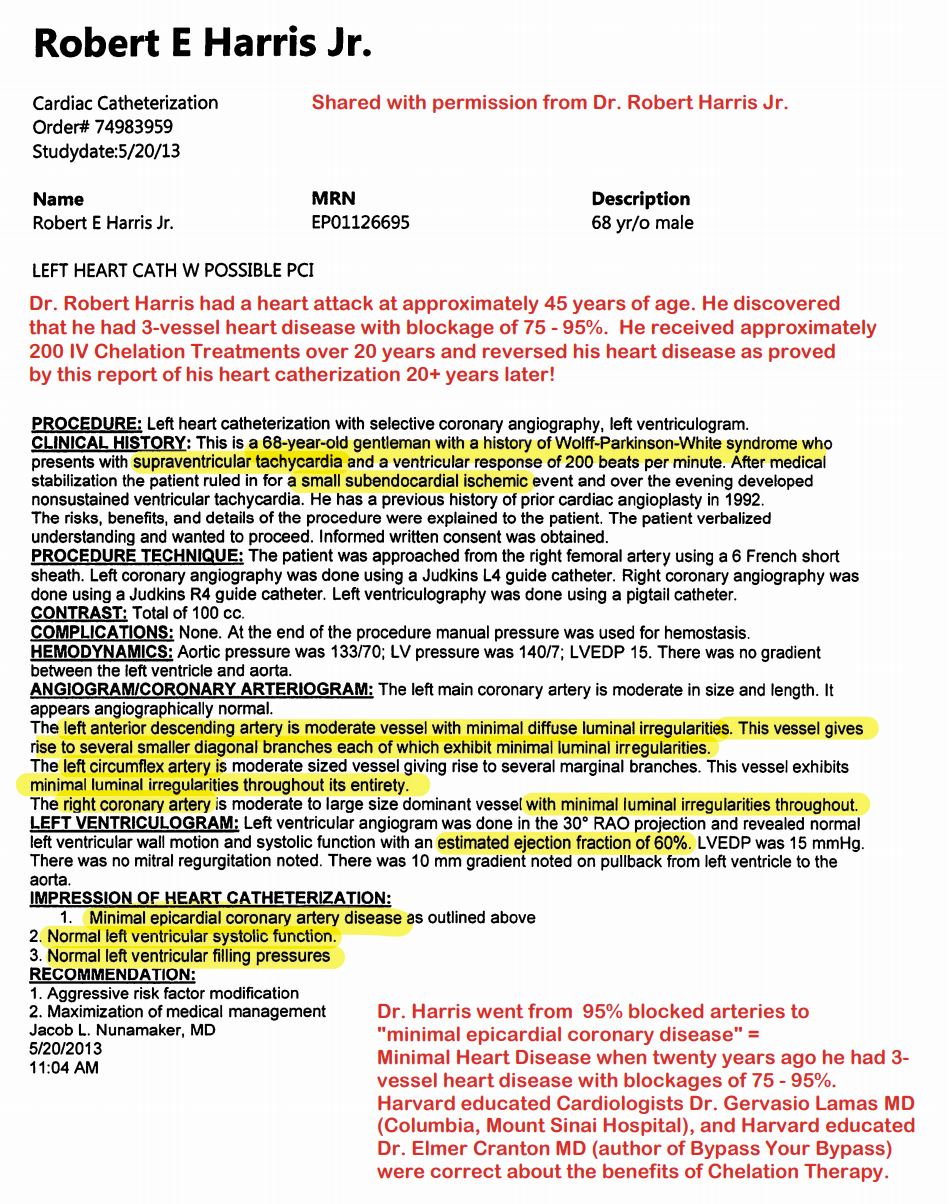
Hear for yourself what patients are saying. Below find PHOTO LINKS TO VIDEOS in which patients discuss their experience with Chelation Therapy.
Lc McCawley - How Chelation Therapy Changed My Heart and My Life
Dr. Robert Harris DMD - How Chelation Improved His Heart
Sol Arledge - How Chelation Resolved My Atrial Fibrillation
Below Find LINKS TO YOUTUBE PRESENTATIONS AND VIDEOS from Dr Gervasio Lamas and Others
Physician Profile: Dr. Gervasio Lamas
Meet Dr. Gervasio Lamas, Chief of the Columbia University Division of Cardiology and Chairman of
Medicine at Mount Sinai Medical Center. He has been recognized with prestigious research grants from
the National Institutes of Health, a part of the US Department of Health and Human Services, and the
world’s largest biomedical research agency.
Heart Health & Diabetes | with Dr. Gervasio “Tony” Lamas – 05/27/2020
TACT Update 2019 with Dr. Gervasio Lamas – 07/26/2019
Chelation Andre Paixao, MD – 12/22/2017
Chelation Therapy First TACT Trial Findings – 11/19/2015
Mount Sinai – First Hospital in U.S. to Offer Chelation Therapy – News 4 – 12/04/2014
ACC 2013: Gervasio Lamas, Mount Sinai Medical Center, Miami Beach, FL, USA – 03/10/2013
Dr. Gervasio Lamas discusses heart disease with WPLG 10’s Kristi Kreuger – 11/09/2010
Chelation Research Proves Heavy Metal Connection to Heart Disease, Stroke, Peripheral Vascular Disease. Removal of Heavy Metals Improves Heart, Brain, Blood Vessel and Organ function.
CHELATION REFERENCE STUDIES BELOW:
- Edetate disodium–based treatment in a patient with diabetes and critical limb ischemia after unsuccessful peripheral arterial revascularizations: A case report January 18, 2019 [FOR PATIENTS with PAD leg pain caused by peripheral artery disease. Consider IV Chelation before amputation]
- Environmental toxic metal contaminants and risk of cardiovascular disease November 13, 2018
- Cadmium level and severity of peripheral artery disease in patients with coronary artery disease September 10, 2018
- Environmental metals and cardiovascular disease September 10, 2018
- Environmental toxic metal contaminants and risk of cardiovascular disease: systematic review and meta analysis September 5, 2018
- Low-level lead exposure and mortality in US adults: a population-based cohort study March 26, 2018
- Chelation Therapy as a Cardiovascular Therapeutic Strategy: the Rationale and the Data in Review December 1, 2017
- Effect of high-dose oral multivitamins and minerals in participants not treated with statins in the randomized Trial to Assess Chelation Therapy (TACT) December 1, 2017
- Enhanced vasculotoxic metal excretion in post-myocardial infarction patients following a single edetate disodium-based infusion. July 6, 2017
- Chronic Toxic Metal Exposure and Cardiovascular Disease: Mechanisms of Risk and Emerging Role of Chelation Therapy November 7, 2016
- Heavy Metals, Cardiovascular Disease, and the Unexpected Benefits of Chelation Therapy May 18, 2016
- Chelation therapy to treat atherosclerosis, particularly in diabetes: is it time to reconsider? April 18, 2016
- Enhanced Vasculotoxic Metal Excretion in Post-Myocardial Infarction Patients Receiving Edetate Disodium Based Infusion April 5, 2016
- Chelation Therapy for CAD February 26, 2016
- Edetate Disodium-Based Treatment for Secondary Prevention in Post-Myocardial Infarction Patients January 21, 2016
- EDTA Chelation Therapy to Reduce Cardiovascular Events in Persons with Diabetes September 12, 2015
- Expert Opinion: My Approach to the Use of Chelation Therapy August 24, 2015
- Chelation Therapy A New Look at an Old Treatment for Heart Disease, Particularly in Diabetics May 26, 2015
- Metal pollutants and cardiovascular disease: Mechanisms and consequences of exposure December 15, 2014
- Chelation therapy after the trial to assess chelation therapy: results of a unique trial August 7, 2014
- Quality-of-life outcomes with a disodium EDTA chelation regimen for coronary disease July 1, 2014
- Chelation therapy and cardiovascular disease: connecting scientific silos to benefit cardiac patients June 12, 2014
- EDTA Chelation Therapy Alone and in Combination with Oral High-Dose Multivitamins and Minerals for Coronary Disease April 2, 2014
- Oral high-dose multivitamins and minerals after myocardial infarction: a randomized trial December 17, 2013
- The effect of an EDTA-based chelation regimen on patients with diabetes mellitus and prior myocardial infarction in the Trial to Assess Chelation Therapy (TACT) November 19, 2013
- Effect of disodium EDTA chelation regimen on cardiovascular events in patients with previousmyocardial infarction: the TACT randomized trial March 27, 2013
-
• Design of the Trial to Assess Chelation Therapy (TACT) December 1, 2012
CHELATION TACT STUDY
IV Chelation Therapy for CAD Coronary Disease / Vascular Disease
IV Na EDTA Chelation and IV Chezone are offered at
Kentuckiana Integrative Medicine
812-913-4416
IV Chelation is ideal for patients who want cardiac disease prevention or who are at maximum medication management with persistent angina, maximal nitrate use and who are NOT surgical or balloon angioplasty-interventional candidates. Patients with intermediate Calcium Scores are also good Chelation candidates.
Feb 26, 2016 | Gervasio A. Lamas, MD, FACC; Ian Ergui, BS; Omar M Issa, DO
Expert Analysis
Ethylene diamine tetraacetic acid (disodium EDTA or edetate disodium), patented in 1938 by Munz, is a chelating agent capable of binding cationic metallic and nonmetallic ions and mobilizing them from physiological tissue in a process termed chelation. 1 EDTA can complex with metals such as lead and cadmium, with the EDTA-metal chelate being excreted in the urine. Edetate disodium (the sodium salt of EDTA), which binds to calcium among other cations, was first used to treat hypercalcemia and digitalis intoxication. Later, in the mid-20th century, motivated by the calcification present in advanced coronary disease, practitioners began using edetate disodium to treat symptoms of cardiovascular disease with initially positive, albeit uncontrolled, results. 2 These early reports were followed by over 50 years of uncontrolled case reports and case series 3 and 3 small clinical trials. 4-6 The trials enrolled fewer than 300 patients in aggregate and had surrogate endpoints and short follow-up. Although interpreted as negative, they could not exclude a small-to-moderate benefit of edetate disodium chelation therapy. Despite, or because of, an absence of clear evidence, most traditional physicians shunned the practice.
Despite chelation therapy being rejected by traditional medicine, pockets of practitioners continued administering edetate disodium treatments with many case reports and case series published. Occasionally, there were reports of serious harm, including death, that were usually due to errors in drug selection, dosage, or rate of infusion. 7 To definitively determine the effectiveness and safety of chelation therapy, the National Center for Complementary and Alternative Medicine and the National Heart, Lung, and Blood Institute released a request for applications in 2001 for a definitive study of edetate disodium treatment in subjects with coronary artery disease (CAD), and the aptly named TACT (Trial to Assess Chelation Therapy) was born.
TACT patients were aged 50 years or older and had an acute myocardial infarction (MI) at least 6 weeks prior to enrollment and a creatinine level of 2.0 mg/dL or less.8 Because chelation therapy was typically administered in conjunction with a high-dose oral multivitamin and multi-mineral regimen, a 2 x 2 factorial trial was designed to test intravenous chelation versus intravenous placebo and oral multivitamin and multimineral versus placebo vitamins/minerals. The primary composite endpoint was all-cause mortality, MI, stroke, coronary revascularization, and hospitalization for angina, which is similar to that used in the ACCELERATE (Assessment of Clinical Effects of Cholesteryl Ester Transfer Protein Inhibition With Evacetrapib in Patients at a High-Risk for Vascular Outcomes), WIZARD (Weekly Intervention with Zithromax for Atherosclerosis and its Related Disorders), and JUPITER (Justification for the Use of Statins in Primary Prevention: An Intervention Trial Evaluating Rosuvastatin) trials and other modern studies. A total of 1708 patients were enrolled with a median follow-up of 55 months. Patients were treated with 40 infusions containing up to 3 grams of intravenous edetate disodium (reduced based on renal function).
The results of TACT, which were widely expected to drive the final nail into the coffin for chelation therapy, surprised the blinded investigators and shocked the traditional medical community.
The researchers proved CHELATION AND MULTIVITAMINS are VERY HELPFUL.
Chelation therapy reduced the risk of cardiovascular events by 18% (hazard ratio [HR] = 0.82; 95% confidence interval [CI], 0.69-0.99; p = 0.035; Figure 1), with a 5-year number needed to treat (NNT) of 18 patients to prevent an event.9
Continued separation between the two curves at the completion of the study suggested a sustained effect of toxic metal removal by chelation. The addition of oral multivitamin and multimineral to chelation, compared with double placebo, demonstrated even more positive results with a 5-year NNT of 12 (p = 0.016).10
![Figure 1: The primary endpoint was a composite of death from any cause, re-infarction=[repeat heart attack], stroke, coronary revascularization, or hospitalization for angina. Figure 1: The primary endpoint was a composite of death from any cause, re-infarction=[repeat heart attack], stroke, coronary revascularization, or hospitalization for angina.](https://regenmedky.com/wp-content/uploads/2021/07/Screen-Shot-2021-07-22-at-5.04.29-PM.png)
Figure 1: The primary endpoint was a composite of death from any cause, re-infarction=[repeat heart attack], stroke, coronary revascularization, or hospitalization for angina.
DR. RAFAEL CRUZ MD IMPORTANT NOTE: This graph proves that from the time the patients finished receiving 40 chelations at time Zero, the chances of dying for the BLUE Group [the Chelation Group] were reduced. The Chelation Blue Group patient’s chances of death, heart attack or stroke were reduced by 20% for non-diabetics and 41% for diabetic patients.
However, the RED line patient group received NO CHELATION. This NO CHELATION “SUGAR pill or placebo group.” actually had higher chances or risk of death, heart attack or stroke during the next FIVE years. The non-chelation group had a much higher 20-41% higher risk of death, heart attack or stroke than the patients who received chelation. Most interesting is that the BENEFITS of those who received chelation kept increasing over time as you can see the distance between the BLUE healthier line and the RED less healthy line keeps getting WIDER and WIDER over time.
Diabetes mellitus was pre-specified as a subgroup for analysis in TACT and consisted of a total of 633 (37.1%) patients.11 Treatment with EDTA infusions reduced the primary endpoint (EDTA chelation vs. placebo: 25% vs. 38%; HR = 0.59; 95% CI, 0.44–0.79; p = 0.0002).11
There was a 15% absolute decrease in the 5-year Kaplan-Meier primary event rate (Figure 2). The 5-year NNT was 6.5 (95% CI, 4.4–12.7). Rates of the principal secondary endpoint (a composite of cardiovascular disease death, MI, and stroke) were also lower for diabetic patients randomized to EDTA chelation (HR = 0.60; 95% CI, 0.39–0.91; p = 0.017), with a 5.1% absolute decrease in the 5-year Kaplan-Meier event rate. Chelation also reduced total mortality in the diabetes subgroup (HR = 0.57; 95% CI, 0.36–0.88; p = 0.011; 5-
year NNT = 12). In addition, there was a significant reduction in recurrent MI (HR = 0.48; 95% CI, 0.26–0.88; p = 0.015) and coronary revascularizations (HR = 0.68; 95% CI, 0.47–0.99; p = 0.042) (Table 1).
One other notable feature of TACT was the long-term pattern of benefit. Some prognosis-modifying treatments, such as coronary artery bypass graft for advanced CAD, are applied once and typically show an amplifying benefit after therapy.
Most medical secondary prevention treatments used in CAD, however, need to be continued in order to provide sustained protection from events. This was not true for chelation in TACT. The event rate curves continued to separate after the infusions ended, and that unusual treatment effect pattern may be a clue to the mechanism of action, such as depletion of a toxicant, such as lead or cadmium that has accumulated in the body over many years.
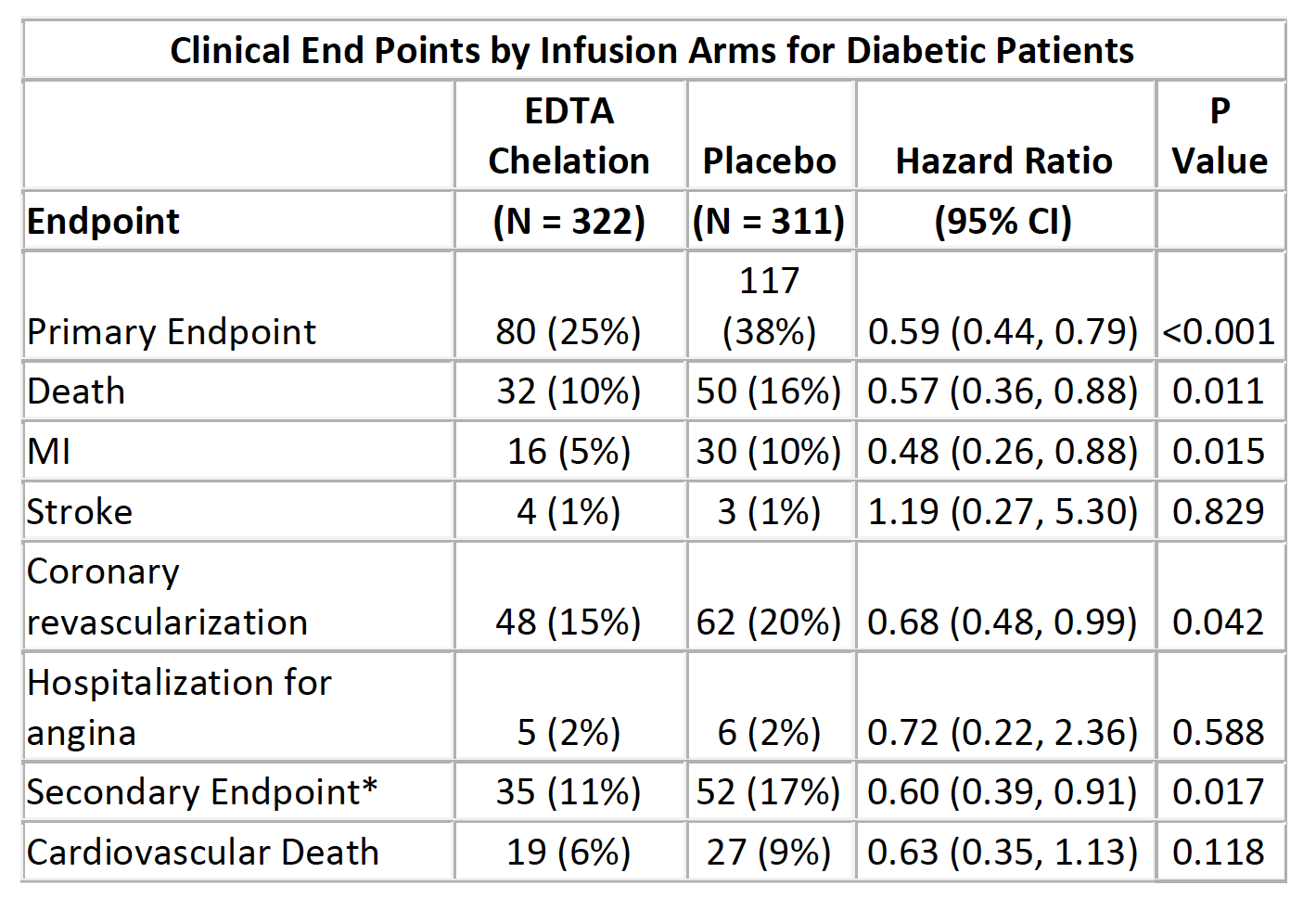
Table 1: Secondary endpoint composed of cardiovascular death, reinfarction, or stroke.
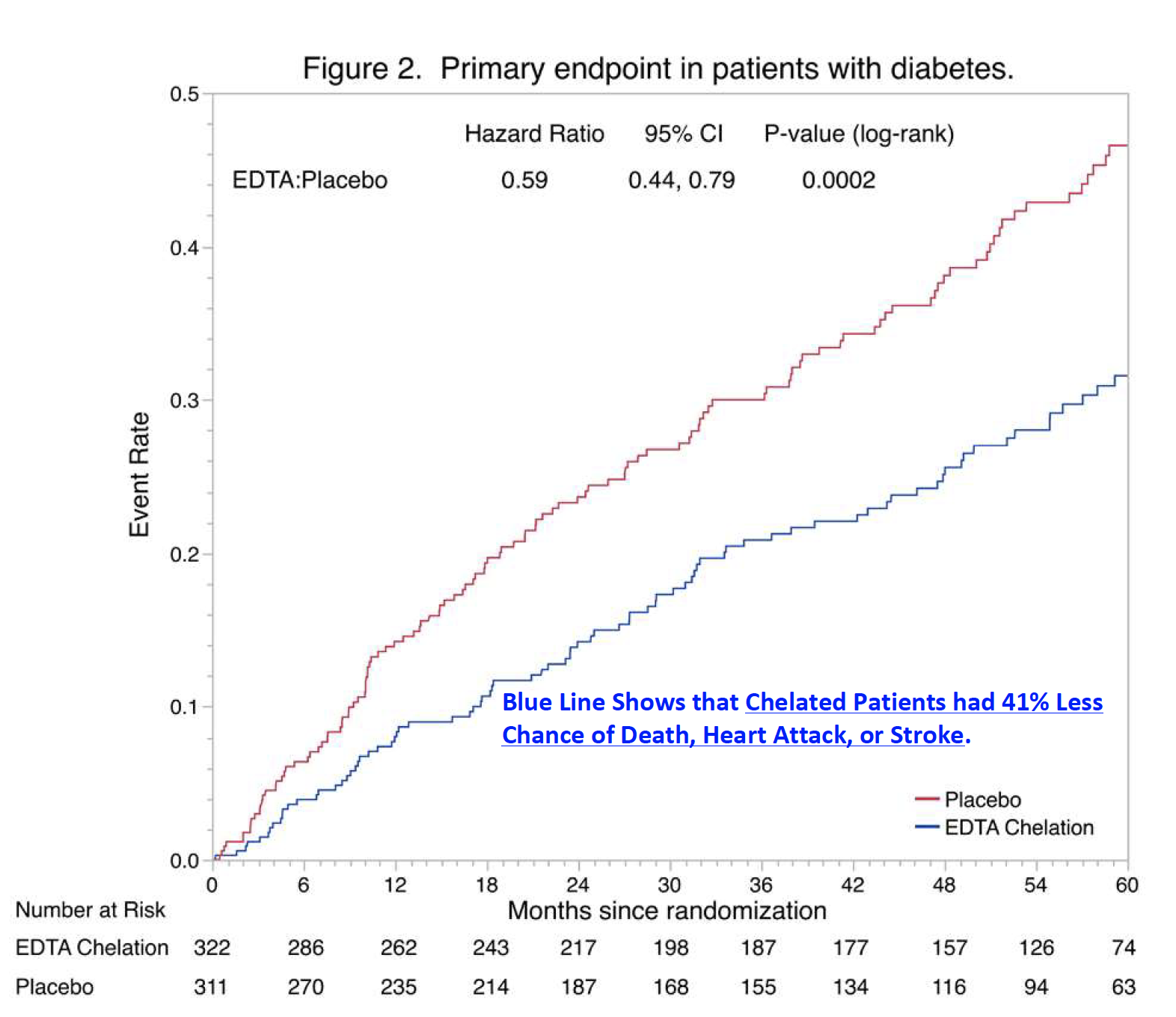
Figure 2. Primary endpoint in patients with diabetes
DR. RAFAEL CRUZ MD IMPORTANT NOTE: This graph proves that from the time the patients finished receiving 40 chelations at time Zero, the chances of dying for the BLUE Group [the Chelation Group] were reduced. The Chelation Blue Group patient’s chances of death, heart attack or stroke were reduced by 20% for non-diabetics and 41% for diabetic patients.
However, the RED line patient group received NO CHELATION. This NO CHELATION “SUGAR pill or placebo group.” actually had higher chances or risk of death, heart attack or stroke during the next FIVE years. The non – chelation group had a much higher 20-41% higher risk of death, heart attack or stroke than the patients who received chelation. Most interesting is that the BENEFITS of those who received chelation kept increasing over time as you can see the distance between the BLUE healthier line and the RED less healthy line keeps getting WIDER and WIDER over time especially for the patients with diabetes represented by the Blue line on the graph above.
The cardiology community greeted the results of the National Institutes of Health-funded TACT with skepticism. Much of the controversy originated in the apparent lack of mechanism of benefit and the air of inexplicable “black magic” that surrounded edetate disodium chelation. But these possible mechanisms existed in silos of epidemiology, toxicology, and basic science in diabetes.
As a result of the expanded availability of automobiles following World War II in the United States, along with the use of tetraethyl lead as a gasoline additive, lead consumption underwent an unprecedented increase through the 1970s. Despite major advances in preventing lead exposure through the banning of leaded gasoline, paint, and solder, lead exposure is widespread and still significantly higher today than it was prior to the 17th century.12 Most adults carry lead body burdens from past and ongoing exposure. The relationship between lead and cardiovascular risk has been acknowledged for some time.13 National Health and Nutrition Examination Survey analyses demonstrated that although blood lead levels have on average dropped since lead additives were removed from gasoline, blood lead remains linked to adverse cardiovascular events including MI, hypertension, stroke, and peripheral artery disease at modern exposure levels.14 Chronic lead burden, as measured in tibial and patellar bone, has been related to increased incidence of MI and higher mortality in men who participated in the Veteran Affairs Normative Aging Study.15
Lead induces oxidative stress, inflammation, and a reduction in bioavailable nitric oxide.16 It has been postulated that these mechanisms play a role in lead-related hypertension, endothelial dysfunction, and vascular disease. Lead-induced hypertension was reversible after treatment with an intravenous chelating agent or anti-oxidant therapy in animal models.16 Lead can induce epigenetic modifications, including hypomethylation in a collagen type I alpha 2 gene promoter,17 a genetic sequence that plays a role in the production of connective tissue.
Cadmium, at levels that are well below those associated with clinical signs and symptoms of cadmium intoxication, is associated with hypertension, stroke, MI, peripheral artery disease, and death in population-based studies such as the Strong Heart Study and National Health and Nutrition Examination Survey.18 Cadmium may contribute to the progression of atherosclerosis by causing damage to DNA or through oxidative mechanisms.19 Cadmium may be connected to an increased risk of premature atherosclerosis, and it may function in the induction of occlusive atherosclerotic disease.19 Experimental studies have demonstrated that cadmium exposure can result in endothelial damage and induce cell death. Cadmium exposure has been associated with altered methylation
patterns in genes encoding proteins that play roles in longevity, cardiovascular disease, and vascular calcification (RAS protein activator like 1 and Klotho).20 Edetate disodium chelates lead and cadmium and allows their efficient removal by renal excretion.
In epidemiologic studies, the association of cadmium with cardiovascular disease was stronger among participants with diabetes. Diabetic patients have been shown to have higher urinary concentrations of metals such as cadmium.21 Furthermore, the enhanced effect of chelation on diabetic patients could be related to the inhibition of the formation of some advanced glycation end products thought to be important for some of the vascular complications commonly seen in diabetes.22 These pathways, in many cases, require metal-catalyzed oxygen chemistry. Others have hypothesized that chelation of metal cations could result in fewer advanced glycation end products.23 In fact, there is very preliminary evidence that diabetic medications, such as metformin and angiotensin converting enzyme inhibitors,
have metal chelating capabilities. 23 A plausible mechanism for the results of TACT, therefore, is that toxic metals are a modifiable risk factor for atherosclerosis.
Recognizing the weight of the TACT results, the American Heart Association and the American College of Cardiology upgraded edetate disodium chelation from a 3C to a 2B indication in their 2014 revision of the guidelines for the treatment of chronic ischemic heart disease.24 Patient-centered clinicians should recognize a new arrow to keep in their quivers for the high-risk diabetic patient.
Nevertheless, additional studies are needed to confirm the utility of chelation therapy in post-MI diabetic populations. Trial to Assess Chelation Therapy 2 received funding from the National Institutes of Health for a planning year. This will be a replicative study of edetate disodium chelation in post-MI diabetic patients. Interested investigators should contact Dr. Lamas at Gervasio.Lamas@msmc.com, @glamasmd, linkedin.com/in/gervasio-lamas-b1b31986,
and http://tact2.org.
References
1. Nash RA. Metals in medicine. Altern Ther Health Med 2005;11:18-25.
2. Clarke CN, Clarke NE, Mosher RE. Treatment of angina pectoris with disodium ethylene diamine
tetraacetic acid. Am J Med Sci 1956;232:654-66.
3. Grier MT, Meyers DG. So much writing, so little science: a review of 37 years of literature on
edetate sodium chelation therapy. Ann Pharmacother 1993;27:1504-9.
4. Knudtson ML, Wyse DG, Galbraith PD, et al. Chelation therapy for ischemic heart disease: a
randomized controlled trial. JAMA 2002;287:481-6.
5. Guldager B, Jelnes R, Jørgensen SJ, et al. EDTA treatment of intermittent claudication–a doubleblind, placebo-controlled study. J Intern Med 1992;231:261-7.
6. van Rij, AM; Solomon, C; Packer, SG; Hopkins, WG. Chelation therapy for intermittent
claudication. A double-blind, randomized, controlled trial. Circulation 1994; 90:1194-9.
7. Centers for Disease Control and Prevention (CDC). Deaths associated with hypocalcemia from
chelation therapy–Texas, Pennsylvania, and Oregon, 2003-2005. MMWR Morb Mortal Wkly
Rep 2006; 55:204-7.
8. Lamas GA, Goertz C, Boineau R, et al. Design of the Trial to Assess Chelation Therapy
(TACT). Am Heart J 2012;163:7-12.
9. Lamas GA, Goertz C, Boineau R, et al. Effect of disodium EDTA chelation regimen on
cardiovascular events in patients with previous myocardial infarction: the TACT randomized
trial. JAMA 2013;309:1241-50.
10. Lamas GA, Boineau R, Goertz C, et al. EDTA chelation therapy alone and in combination with
oral high-dose multivitamins and minerals for coronary disease: The factorial group results of
the Trial to Assess Chelation Therapy. Am Heart J 2014;168:37-44.e5.
11. Escolar E, Lamas GA, Mark DB, et al. The effect of an EDTA-based chelation regimen on
patients with diabetes mellitus and prior myocardial infarction in the Trial to Assess Chelation
Therapy (TACT). Circ Cardiovasc Qual Outcomes 2014;7:15-24.
12. Flegal AR, Smith DR. Lead levels in preindustrial humans. N Engl J Med 1992;326:1293-4.
13. Nawrot TS, Staessen JA. Low-level environmental exposure to lead unmasked as silent
killer. Circulation 2006;114:1347-9.
14. Schober SE, Mirel LB, Graubard BI, Brody DJ, Flegal KM. Blood lead levels and death from all
causes, cardiovascular disease, and cancer: results from the NHANES III mortality study. Environ
Health Perspect 2006;114:1538-41.
15. Weisskopf MG, Jain N, Nie H, et al. A prospective study of bone lead concentration and death
from all causes, cardiovascular diseases, and cancer in the Department of Veterans Affairs
Normative Aging Study. Circulation 2009;120:1056-64.
16. Vaziri ND, Khan M. Interplay of reactive oxygen species and nitric oxide in the pathogenesis of
experimental lead-induced hypertension. Clin Exp Pharmacol Physiol 2007;34:920-5.
17. Hanna CW, Bloom MS, Robinson WP, et al. DNA methylation changes in whole blood is
associated with exposure to the environmental contaminants, mercury, lead, cadmium and
bisphenol A, in women undergoing ovarian stimulation for IVF. Hum Reprod 2012;27:1401-10.
18. Tellez-Plaza M, Guallar E, Howard BV, et al. Cadmium exposure and incident cardiovascular
disease. Epidemiology 2013;24:421-9.
19. Messner B, Knoflach M, Seubert A, et al. Cadmium is a novel and independent risk factor for
early atherosclerosis mechanisms and in vivo relevance. Arterioscler Thromb Vasc
Biol 2009;29:1392-8.
20. Ruiz-Hernandez A, Kuo CC, Rentero-Garrido P, et al. Environmental chemicals and DNA
methylation in adults: a systematic review of the epidemiologic evidence. Clin
Epigenetics 2015;7:55.
21. Schwartz GG, Il’yasova D, Ivanova A. Urinary cadmium, impaired fasting glucose, and diabetes in the NHANES III. Diabetes Care 2003;26:468-70.
22. Yamagishi S, Maeda S, Matsui T, Ueda S, Fukami K, Okuda S. Role of advanced glycation end
products (AGEs) and oxidative stress in vascular complications in diabetes. Biochim Biophys
Acta 2012;1820:663-71.
23. Nagai R, Murray DB, Metz TO, Baynes JW. Chelation: a fundamental mechanism of action of AGE inhibitors, AGE breakers, and other inhibitors of diabetes complications. Diabetes 2012;61:549-59.
24. Fihn SD, Blankenship JC, Alexander KP, et al. 2014 ACC/AHA/AATS/PCNA/SCAI/STS focused
update of the guideline for the diagnosis and management of patients with stable ischemic
heart disease: a report of the American College of Cardiology/American Heart Association Task
Force on Practice Guidelines, and the American Association for Thoracic Surgery, Preventive
Cardiovascular Nurses Association, Society for Cardiovascular Angiography and Interventions,
and Society of Thoracic Surgeons. Circulation 2014;130:1749-67.
Clinical Topics: Cardiac Surgery, Dyslipidemia, Invasive Cardiovascular Angiography and
Intervention, Prevention, Stable Ischemic Heart Disease, Vascular Medicine, Cardiac Surgery and
Arrhythmias, Cardiac Surgery and SIHD, Lipid Metabolism, Novel Agents, Interventions and Coronary Artery Disease, Interventions and Vascular Medicine, Hypertension, Stress,Chronic Angina Keywords: Angina Pectoris, Angiotensin-Converting Enzyme
Inhibitors, Azithromycin, Benzodiazepines, Biological Markers, Cadmium, Cadmium
Poisoning, Calcium, Cations, Cell Death, Chelating Agents, Chelation Therapy, Cholesterol Ester Transfer Proteins, Collagen Type I, Confidence Intervals, Connective Tissue, Coronary Artery Bypass, Coronary Artery Disease, Creatinine, Diabetes Mellitus, Digitalis, Edetic Acid, Epidemiologic Studies, Ethylenes, Glycosylation
End Products, Advanced, Hypercalcemia, Hypertension, Inflammation, Metformin, Methylation, Myocardial Infarction, Nitric Oxide, Oxidants, Oxidative Stress, Oxygen, Peripheral Arterial Disease, Primary Prevention, Prognosis, Risk Factors, Secondary Prevention, Sodium, Stroke, Tetraethyl Lead, Vascular Calcification, ras Proteins, Angina, Stable
